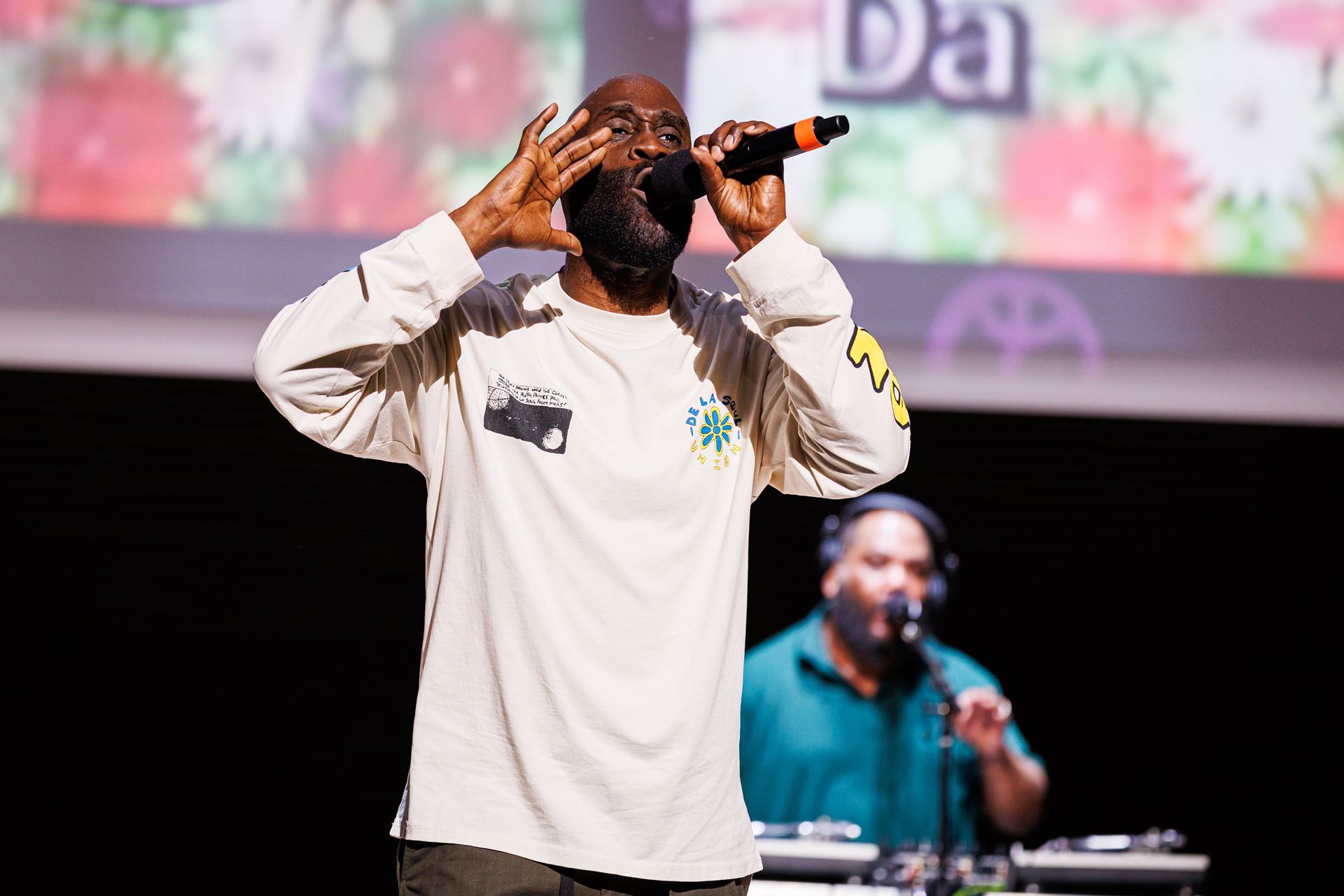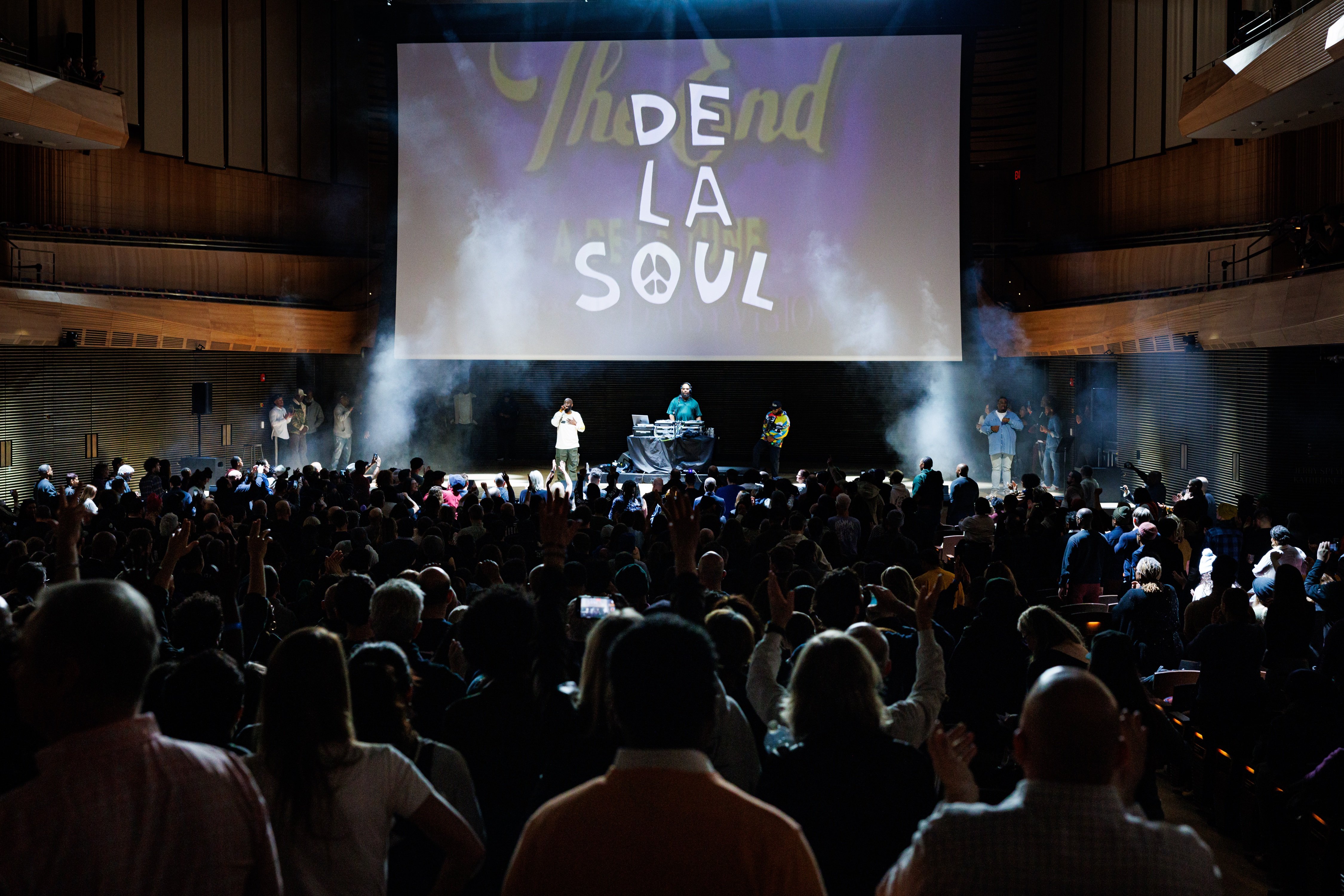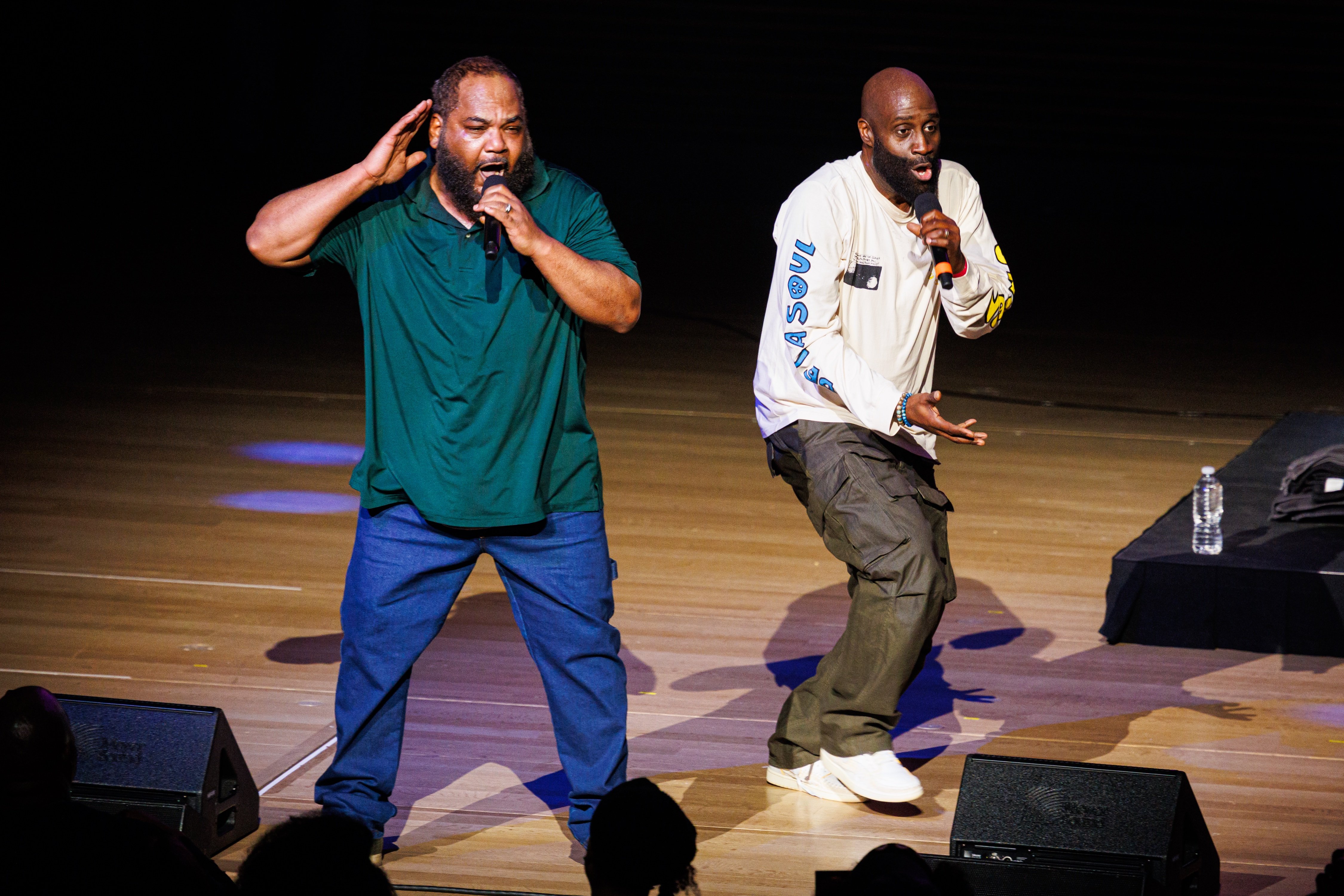
Why the rap group's pioneering music continues to surprise.
by Jake Cline
“If you want to know how important De La Soul is to hip-hop, consider the music that wouldn’t exist without them,” Marcus J. Moore writes in High and Rising: A Book About De La Soul. “There’s no Mos Def, Common or the Roots. No Pharrell, Kanye West or Kendrick Lamar. … De La brought freedom to hip-hop, and some thirty years after their introduction, there’s still so much to unravel about their artistic genius.”
People who are unfamiliar with the music of De La Soul may balk at the intensity of Moore’s praise, and his book, written without the group's cooperation, certainly can run hot (“Where Were You the First Time You Heard Stakes Is High?” one chapter title reads). But A) he is not alone in recognizing the Long Island-born trio for creating new sounds within hip-hop (as The New York Times has noted), releasing consistently excellent music for decades (as The Atlantic has observed) and producing at least one 10-out-of-10 album (as Pitchfork has raved), and B) listen to 3 Feet High and Rising, De La Soul’s 1989 debut album, and try to overstate its greatness.
As Moore recounts, De La Soul, who’ll play the Arsht February 22, came together in the late 1980s when three music-obsessed high school students—David Jolicoeur, Kelvin Mercer and Vincent Mason Jr.—bonded over a playful, anything-goes approach to artmaking and a shared aversion to trends. Joined by a simpatico DJ and producer named Prince Paul, De La Soul, Moore writes, “was guided by one question: Why not?”
Why not sample Hall & Oates, Steely Dan, Johnny Cash, Richard Pryor, War and Liberace? Why not release an album with a neon-yellow cover ornamented with cartoon daisies? Why not record skits set on a fictional game show? Why not declare the group’s aesthetic “dead” just two years later?
“It was just a process of all our separate lives and the music within them just being dumped into sessions of fun,” Mercer, aka Posdnuos, told The New York Times of the group’s studio work.
In the late 1980s and early ’90s, hip-hop and, more broadly, rock ’n’ roll weren’t exactly teeming with merry-sounding, Schoolhouse Rock-referencing artists. 3 Feet High and Rising was released in the year following N.W.A.’s Straight Outta Compton and Public Enemy’s It Takes a Nation of Millions To Hold Us Back—brawny and uncompromising recordings whose aftershocks are still being felt—and just months before Nirvana’s Bleach and Soundgarden’s Louder Than Love, albums that presaged the grunge explosion of 1991. What Posdnuos, Trugoy the Dove (Jolicoeur) and Maseo (Mason) considered fun—yodeling, nursery rhymes, button-down dress shirts—could not have seemed more out of fashion. Being unhip, of course, does not equate to being unheard.
“The objective with anything creative should be to make it for yourself first and let others catch up,” Moore writes. “And that’s what De La did: By sampling genres other producers wouldn’t touch, like Hall and Oates and other rock and ‘blue-eyed soul’ that Black people liked but that was still considered white music, De La spoke to groups of listeners that bands not named Run-D.M.C. hadn’t yet.”
The trio also appealed to other artists. In his book Go Ahead in the Rain: Notes to A Tribe Called Quest, cultural critic Hanif Abdurraqib recalls how De La Soul and fellow New York trio the Jungle Brothers “were something like older siblings” to Queens quartet A Tribe Called Quest, whose own ambitions and influence would prove undeniable and immense; in 2024, they were inducted into the Rock & Roll Hall of Fame. Together, the three acts founded Native Tongues, a politically and musically progressive collective who shared, Abdurraqib writes, “a set of imagined and always-shifting ideals,” many of them rooted in Afrocentrism. Other Native Tongues members included Queen Latifah, Monie Love, Busta Rhymes and Black Sheep.

(De La Soul performed January 17, 2025 at Lincoln Center in New York. Photo by Sachyn Mital courtesy of artist management.)
De La Soul followed 3 Feet High and Rising with three albums that helped to define what Moore describes as the group’s “golden era”: 1991’s De La Soul Is Dead, 1993’s Buhloone Mindstate and 1996’s Stakes Is High. The music on those recordings can appear tougher and more nuanced than that on the debut, but it never sounded free of surprise—for their listeners or for themselves. Aging and getting old are not always synonymous.
“Growing up with De La meant not growing up at all, really,” Moore writes. “It’s being mature beyond your years but also childish enough to live joyously.”
Until 2016, De La Soul continued to release new music, even as their well-documented battles within the recording industry over copyright issues and other financial and intellectual concerns prevented their albums and songs from being available on digital platforms. Finally, in March 2023, the group’s first six albums (the aforementioned “golden era” records plus 2000’s Art Official Intelligence: Mosaic Thump and 2001’s AOI: Bionix) appeared on streaming services for the first time.
Celebrations were muted, however. One month earlier, Jolicoeur, who reportedly had congestive heart failure, passed away at the age of 54. “He wrote the kind of deeply felt verses that take years to fully unpack,” Rolling Stone’s Mosi Reeves remembered of the rapper who was “unafraid to let his lovely mind float.”

(De La Soul's Maseo and Posdnuos performed songs from throughout the group's decades-old catalog at Lincoln Center. Photo by Sachyn Mital courtesy of artist management.)
Moore ends his book with a moving epilogue addressed to Jolicoeur. “You were meditative, and your words were counterpunches to the misogyny of other rappers,” the author writes. “Though you spoke to masses of people, your words stemmed from the love and protection of Black people and Black culture.”
Mercer and Mason continue to perform as De La Soul, sometimes in the company of Prince Paul, as they did during a charming 2024 appearance on Stephen Colbert’s The Late Show and again in January at New York’s Lincoln Center, where they were joined onstage by the Jungle Brothers, Talib Kweli and Pete Rock. They’ll play two shows in Switzerland this month before making their Arsht debut. Recently, the group announced the release of a 20th anniversary edition of 2004’s The Grind Date with two previously unavailable songs: “Bigger” and “Respect.” Even after all these years, De La Soul maintains the ability to surprise. Or as Moore puts it: “De La Soul is everlasting.”
(Top: Photo by Sachyn Mital courtesy of artist management.)



